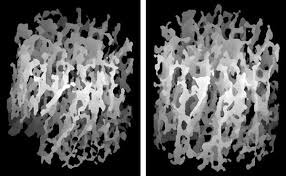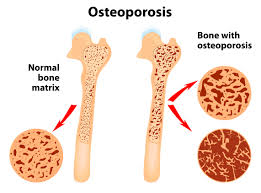Weight Training for Women with Osteoporosis
Weight Training for Women with Osteoporosis: Understanding Strength Training
The bigger percentage of the general body weight is in the bones. It is the bones that forms the structure which when covered by the flesh then we can say that this is the body. Therefore the stability of the bones is very important if life is to be enjoyable. It is also important to appreciate that it is the bones that bears the greatest burden in carrying the body weight and that is why we want to look into details weight training for women with osteoporosis. If you have been with us through the past articles, we did mention that women are most vulnerable to be attacked by osteoporosis than men. It is because of this vulnerability that we want to offer solutions to women through creating awareness and an elaborate and professional weight training programs tailored to meet your individual needs. We spoke to doctor Dalal Akoury the MD and founder of AWAREmed Health and Wellness Resource Center about this problem and she is going to be taking us through some of the things we need to do to be safe from the attacks of osteoporosis.
Weight Training for Women with Osteoporosis: Weight Training for Osteoporosis
To bring this to perspective, doctor Akoury raises these questions, did you know that weight training for osteoporosis is not just about walking or doing aerobics? Are you aware that even weight lifting too can help protect your bones and prevent osteoporosis-related fractures? I asked these because ordinarily when one is suffering from osteoporosis, it is believed that their bones are weak and may not need such exercises, nonetheless studies has shown that strength training over a period of time can help prevent bone loss and may even help build new bone.
According to one of the studies, postmenopausal women who participated in a strength training program for a year registered a significant increase in their bone density and particularly in the most vulnerable places like the spine and hips. These are the areas mostly affected by osteoporosis in older women. It goes therefore without saying that it is important to maintain strong muscles during weight training as this will help the patients in keeping up their balance and coordination. These two are very critical elements in preventing falls, which can lead to osteoporosis-related fractures. Osteoporosis is eating on our bones and coupled with the rate at which we lose muscles as we grow annually such that by the time we are very old in late 60 and above we only have just about 55% or even less of our muscles left. If you have been wondering why people get weak as they get older then this can explain your concerns. We are now in the know of the consequences of osteoporosis in our growth and development; therefore if we want to keep fit and age in strong muscles, then we must chose to prevent this by taking weight training seriously.
Weight Training for Women with Osteoporosis: Getting Started on Weight Training for Osteoporosis
Now that we have made a decision to start the trainings, the question would be how should you start weight training for osteoporosis? Focus on the back and the hip, says doctor Dalal Akoury who is also the founder of AWAREmed Health and Wellness Resource Center. It is in order to start from there because those are the areas mostly damaged by bone loss, and the area’s most at risk from osteoporosis-related fractures. And owing to the delicate nature of this problem, engaging a weight loss professional would be very ideal. Doctor Akoury recommends that a good exercise should include hip extension, abduction, adduction and hip flexion. In other words the exercise should largely concentrate around the hips. The following are some of the exercises you may opt for:
- Backward bending is also good.
- Sit on a bench or chair with 5-pound weights strapped to each ankle.
- Then “march” in place, lifting the knees alternately.
You’re working the hip flexor muscles, which are attached to both the back and hip, which leads to improved bone and muscle mass in both areas. The following are some of the very important weight training tips you can chose from:
- Work under the supervision of a qualified, certified personal trainer, especially at first and particularly if you have any medical issues.
- Do strength training two to three times a week, with at least one day of rest between each session (especially if you’re working the same muscles at each session).
- Do one exercise for each major muscle group, for a total of eight to 12 different exercises. Do one or two sets of eight to 10 repetitions for each exercise.
- Lift the weight slowly; lift to a count of four and lower to a count of four, says Lein. “This decreases the likelihood of injury while helping to recruit the muscle better.”
- Don’t use other muscles to compensate. You should only be moving the muscle you’re supposed to be moving!
- Tighten abdominal muscles to help protect your spine.
- Periodically consult with a trainer about increasing the amount of weight you lift as you become stronger.
If you already have osteoporosis, seek out a personal trainer experienced in working with people who have osteoporosis. You may have to find one, like doctor Akoury, at a medical center with an osteoporosis program. And besides, ensure that in your exercise be sure to take these two precautions seriously:
- If you have osteoporosis in your spine, don’t lift more than 20 to 25 pounds with your arms or against your trunk, and avoid movements that have you twisting your trunk or bending forward extensively.
- If you have osteoporosis in the hips, there is no specific restriction on the amount of weight lifted or types of movement. But people with osteoporosis in any area should ensure that their activities don’t increase the risk of falling.
Finally the result on the bone density may not be realized immediately nonetheless this will become clear as you progress with the exercise and taking the weight measurement from time to time during the training duration. Just to avoid unnecessary discouragement about the outcome, it may be wise that the patients are given a longer period like one year to get the actual result of their bone density. Remember that this should be a process and may not yield to your expectation as in the normal body weight loss. You may be training for the whole year and only realize 1% change in bone density. Doctor Akoury says that this should not discourage you because you are on the right track. If you were to be persistent with that 1% for ten years, then you will achieve 10% which is a lot of bones added.
Weight Training for Women with Osteoporosis: Understanding Strength Training





